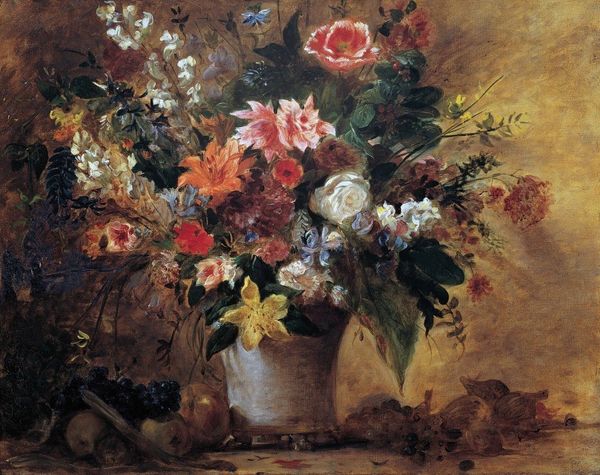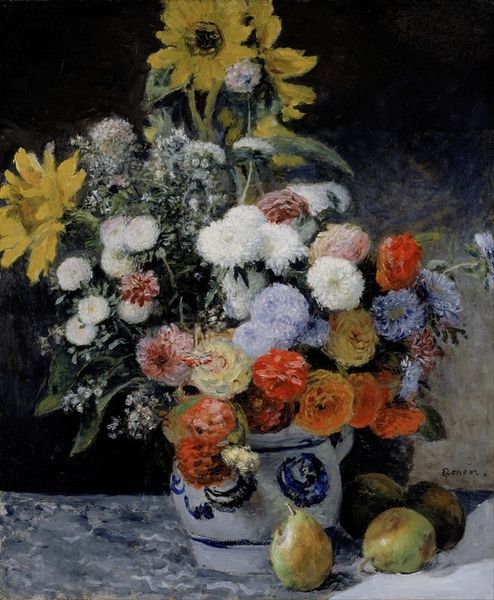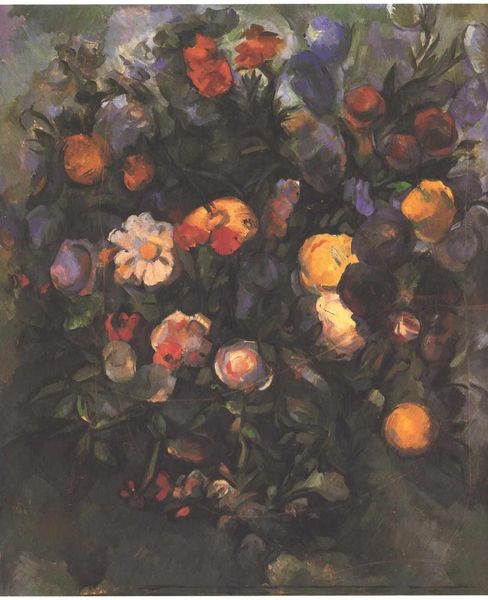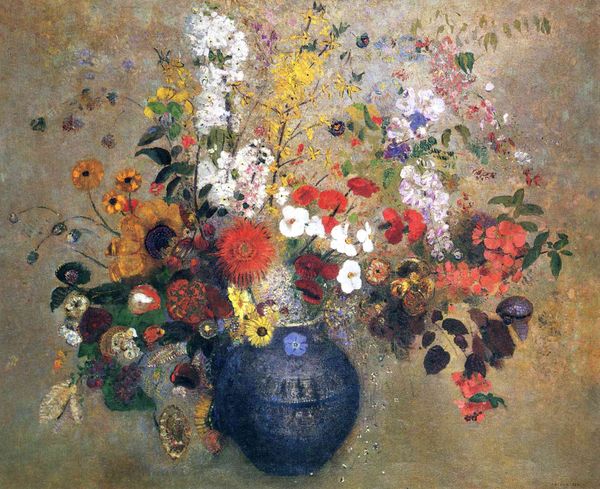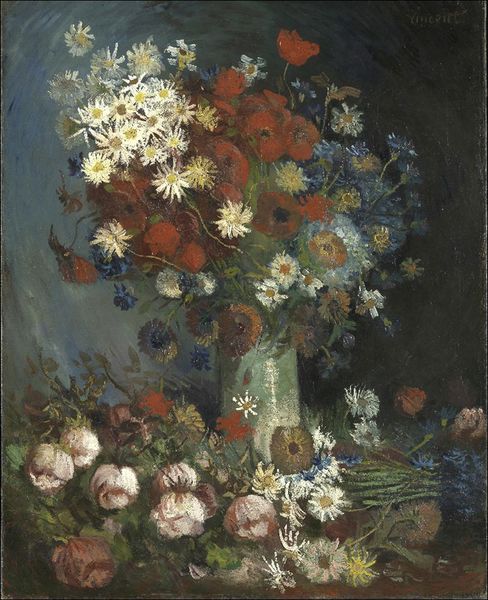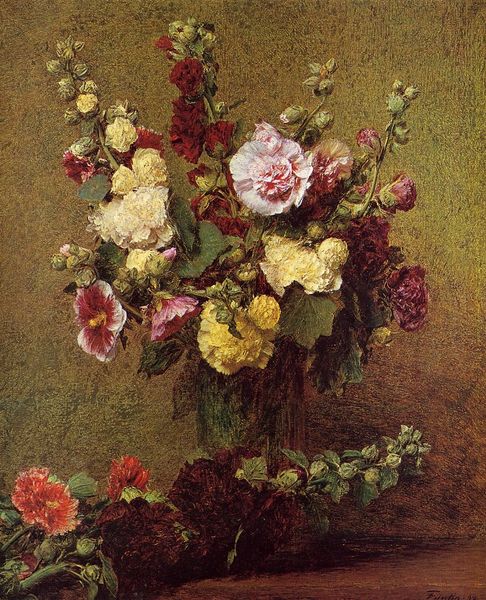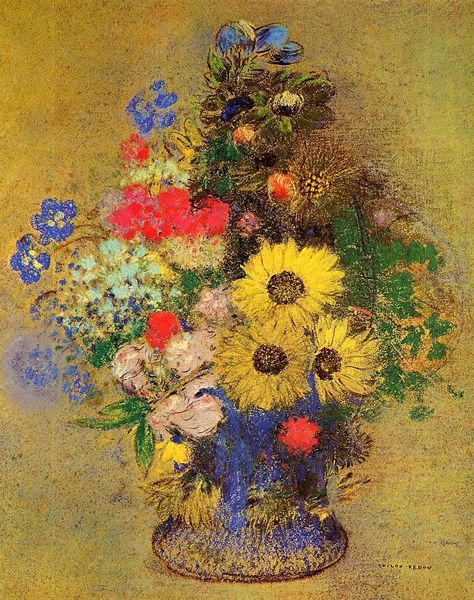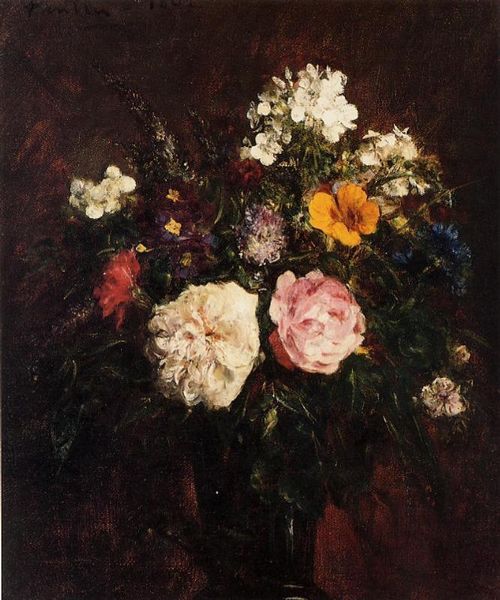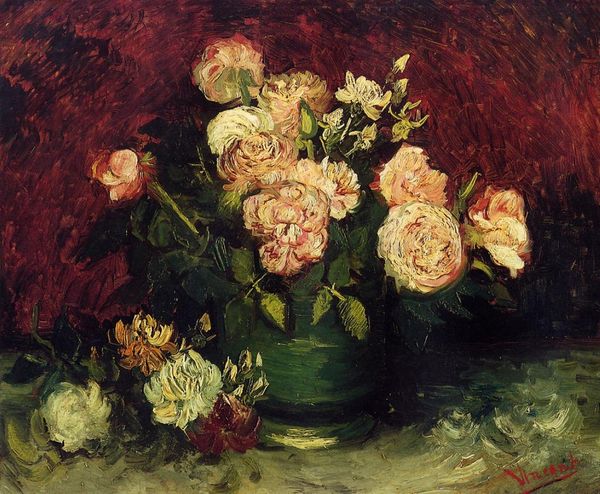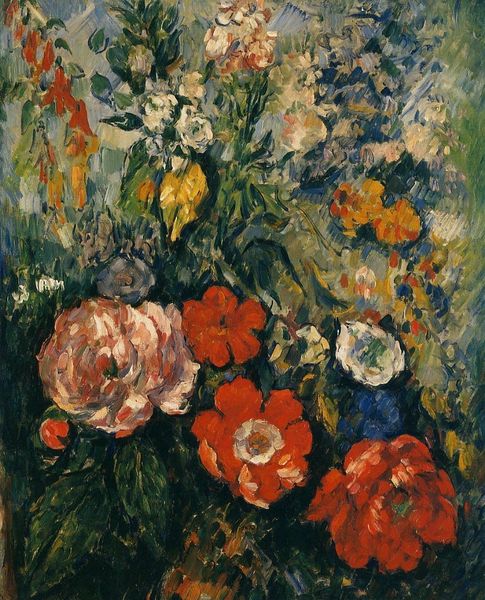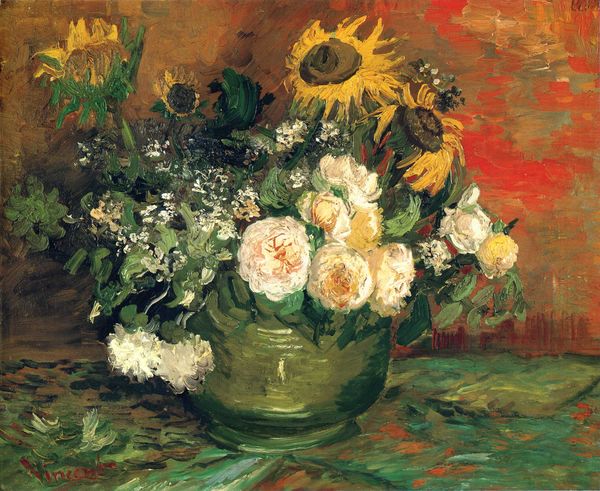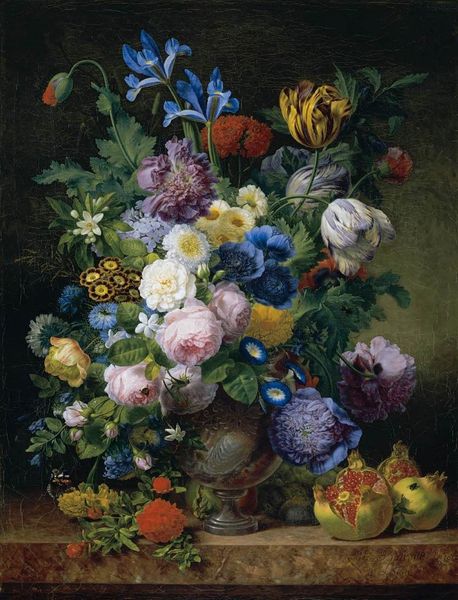
painting, oil-paint
#
still-life
#
painting
#
oil-paint
#
flower
#
oil painting
#
plant
#
romanticism
Dimensions: 65 x 64 cm
Copyright: Public domain
Editor: Here we have Eugène Delacroix's "Bouquet of Flowers," an oil painting from around 1850. The arrangement feels so vibrant, almost overflowing with life. How do you interpret this work? Curator: I see this painting as a potent symbol of fleeting beauty and perhaps, a veiled contemplation of mortality. Flowers, traditionally, have been powerful visual reminders of life's transience – they bloom, flourish, and then inevitably fade. Delacroix, with his Romantic sensibilities, often explored the sublime, which included facing difficult truths about death with acceptance, even peace. Editor: So, you're saying the painting isn't just pretty flowers but carries a heavier emotional weight? Curator: Exactly! Note the richness of color, almost verging on decay. Delacroix may have intended to imbue even the vibrancy of life with a foreshadowing of its end. Think of the language of flowers. Every flower in that bouquet had cultural significance; were we able to precisely identify the varieties represented, it would speak more clearly about death. Do you think these choices may suggest a hidden narrative? Editor: Perhaps a story about remembrance or mourning? Now that you mention it, the darker tones are pretty hard to ignore. Curator: Indeed. It invites us to contemplate the duality inherent in beauty – its allure is heightened by its ephemerality. We might ask what other traditional symbols did the flowers adopt into that particular arrangement, and do they mean something for him. Editor: It’s fascinating to consider how Delacroix layered so much meaning into something that, on the surface, seems like a simple still life. I definitely see it differently now. Curator: As do I. Each encounter with such potent imagery enriches our understanding of human experiences.
Comments
No comments
Be the first to comment and join the conversation on the ultimate creative platform.
